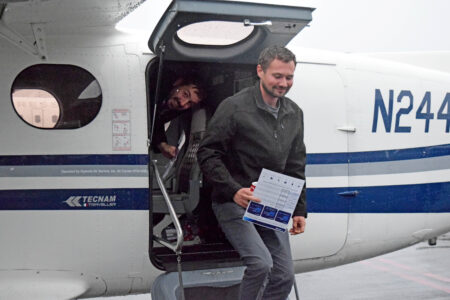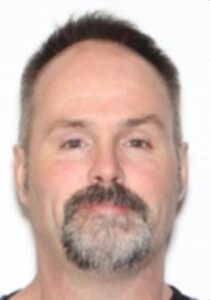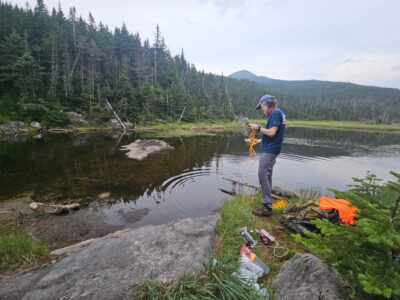Higher education, lower prices
High schoolers in college bridge program get affordable jumpstart
SARANAC LAKE — A year of college for no more than $750?
With some universities seeing their total cost of attendance creep up toward the six figures, $750 almost seems too good to be true. But it isn’t, and it’s an option available to high school students — before they even graduate — within Franklin County, Essex County and portions of other surrounding counties within North Country Community College’s service area.
NCCC’s College Bridge Program provides concurrent, or dual, enrollment courses open to high school juniors and seniors — along with sophomores in foreign language classes — taught in high schools by high school teachers.
These courses satisfy high school graduation requirements while counting for college credit. They are typically a conventional high school subject, such as U.S. history, that is taught at a more in-depth level, like that which would be encountered in college.
In turn, the credits earned from that class in high school will follow the student and transfer to any of the 89 SUNY and CUNY campuses throughout the state, provided the student earns a “C” or higher. Though private or out-of-state colleges and universities aren’t obligated to accept the transfer credits, many do.
“Not only are SUNY credits readily accepted at any other SUNY institution, which comprises a large number of colleges in New York state, but SUNY credits, in general, are pretty readily recognized by a lot of private universities as being a relatively high-quality credit,” said Franklin-Essex-Hamilton BOCES District Superintendent Dale Breault.
Speaking from personal experience, he said the Bridge program was hugely beneficial, both academically and financially. Breault has two sons in college at non-SUNY schools, one at Rensselaer Polytechnic Institute and the other at Louisiana State University. While RPI didn’t count some of the credit hours toward the major, Breault’s son was able to use them to satisfy elective requirements. Those would have otherwise been subject to the college’s regular tuition pricing. LSU accepted all of the Bridge credits toward his other son’s major.
NCCC’s Bridge program is part of New York’s early college high school programs, and it’s among several North Country colleges and universities to offer these dual enrollment programs to FEH BOCES’ component districts. While there’s some variation in the cost between these institutions, it’s a fraction of what the credits would cost in college. NCCC’s Bridge classes are capped at $75 per course, regardless of the credit hours.
In the Saranac Lake and Lake Placid central school districts, the Bridge program comes at no direct cost to students and their families — as the school district covers the fees through a cooperative services agreement through FEH BOCES.
“Not having the families pay the cost of these classes is huge,” said FEH BOCES Deputy Superintendent Lori Tourville. “Some have more than one child taking more than one course at a time, so if you have three kids in high school and they’re all enrolled in some type of Bridge course, that can add up pretty quickly.”
Tourville said the individual school districts front the cost through this program, which is partially reimbursed — from 36% to 90%, depending on the district — from state aid the following year. For families in districts that aren’t part of the shared services agreement, Tourville said NCCC’s $75 fee — or a comparable amount from another higher education institution — is still so much less expensive compared to what the credits would come at for enrolled college students.
“Even if it’s a $75 fee, it’s so significantly less than they would pay once they’re an enrolled freshman in college,” she said.
Luke Hudak is the dual enrollment coordinator with NCCC’s Bridge program. He said that in the 10 years he’s been with the program, instances in which the financial burden is too great are few and far between.
“And if that is the case, we almost always find a way to finance that student’s education — either through the districts or local organizations,” he said. “Finance is never an impediment.”
Hudak said it’s NCCC’s mission to provide educational opportunities that would otherwise be unavailable in its large and rural service area.
“Bridge is one of the things that fulfills the mission of the college,” he said. “It allows us to provide something to the community that is otherwise not available — and that is access to high-quality and inexpensive higher education.”
Though exact numbers were not available from NCCC’s registrar’s office by press time Thursday evening, Hudak estimated that between 850 and 1,000 high school students were enrolled in at least one Bridge class throughout the college’s service area, with between 2,300 and 2,400 total enrollments when accounting for some students in multiple Bridge classes.
He said that families who are concerned about being able to afford Bridge classes should reach out to their high school first, as they typically either have funds to assist in these circumstances or contacts with community organizations who can help.
Beyond the low cost, the Bridge program gives college-bound high school students a leg up as they are able to experience and learn to manage some of the rigors of college academics. It’s also a chance for students who aren’t sure if college is for them or not to get a taste of what it’s like, helping them make a more informed decision before they graduate high school.
Much of Hudak’s job is spent talking with and answering questions high school students have about the program as he visits all of the high schools in NCCC’s service area at various points throughout the school year. In listening to students, Hudak said a common perception of college is that it’s nebulous or daunting. He said that’s understandable, especially for students who don’t have a family history of attending college.
“Many students who might not be familiar with, or don’t have a family history of attending college, can learn that a college education is accessible,” he said. “While it might be a lofty goal to graduate from college, being able to take some college courses and succeed is a very accessible goal for our students.”
Hudak is also a liaison between NCCC faculty — who are developing a lot of the curriculum and standards for the Bridge classes — and the high school teachers who deliver it to and, ultimately, assess students’ understanding of it.
He said all of the high school teachers with NCCC’s Bridge Program have gone through an accreditation process and been approved by the college ahead of time, ensuring that they have the requisite certifications and experience. At the end of the day, Hudak said college-level classes must have college-level rigor to them. It’s an integral reason of why the credits are accepted in the SUNY system and beyond.
“We have enormous faith in our teachers and our districts — because we have such long and positive relationships with them — that the content being delivered is quality,” he said.
As school districts across the North Country have seen steady enrollment declines over the past couple of decades, Hudak said NCCC and FEH BOCES have maintained an “excellent” partnership in trying to maximize the available course offerings to students, and deliver as high a quality of a product as possible.
For instance, Tourville said FEH BOCES’ cooperative service agreement includes some upcoming professional development sessions for high school teachers involved in the Bridge program with NCCC faculty.
SLCSD Superintendent Diane Fox said even though the state aid reimbursement rates aren’t particularly high in Saranac Lake — given the district’s relatively high property values — joining the FEH BOCES cooperative service agreement is still a good deal for district families, given how many students are enrolled in the program.
“We know that our Bridge programs are great for our students,” she said. “It is, in fact, a bridge program because they are working with college-level material, but in the safe setting of a high school. When you go to college and take a college course, your professor has office hours, you go to class two or three times a week or even once a week — and then you’re kind of left on your own to figure it out.”
Fox said that, on the other hand, in Bridge, teachers see students every day, and are able to work with them closely to make sure that they are meeting the rigorous standards, and help them when they aren’t.
“It’s great all-around,” she said. “It keeps our staff connected with what’s happening at the next level. It allows our kids to truly bridge between high school and college — and we are trying to do all of that as financially efficiently as possible.”



